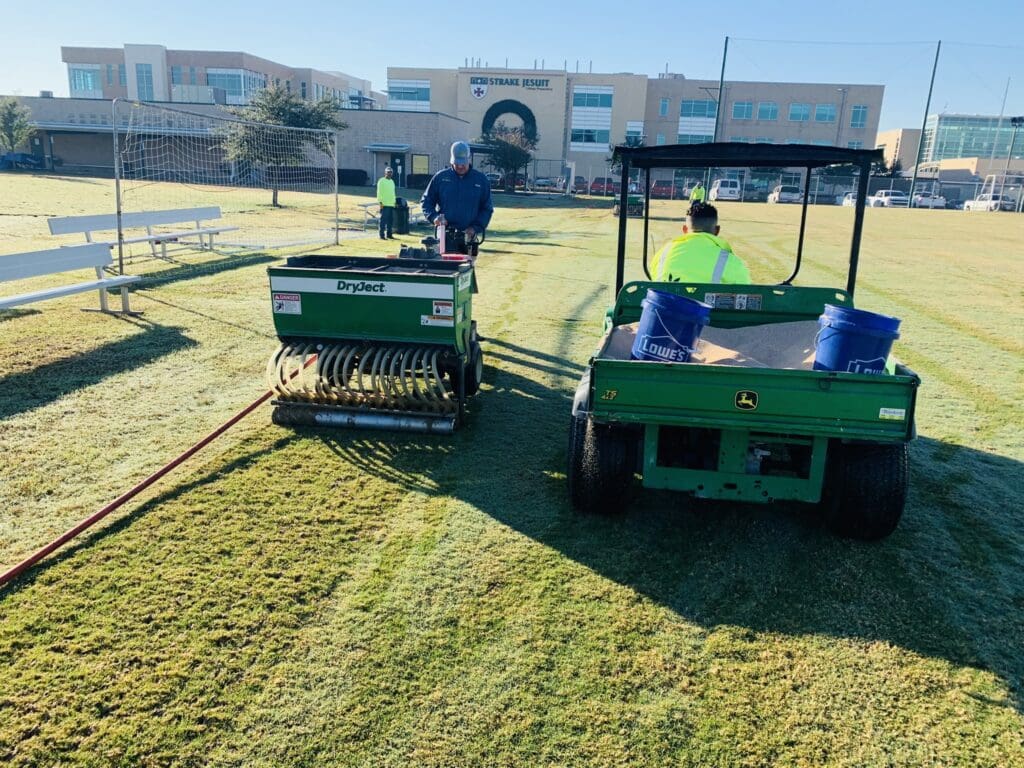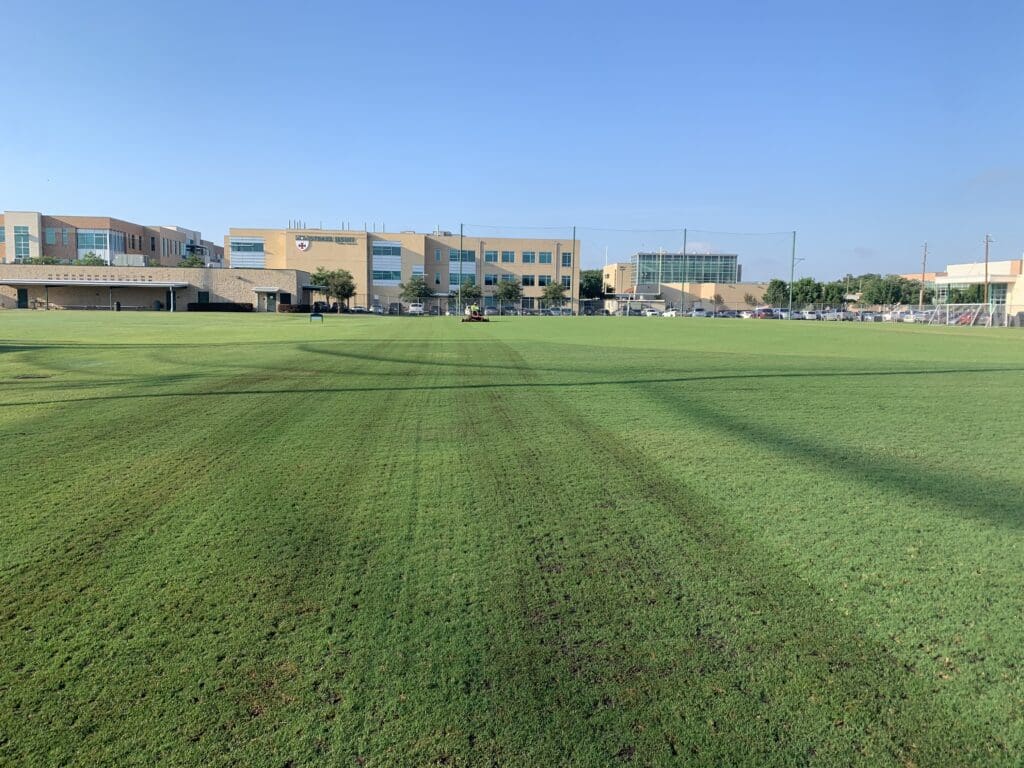
For many years, the athletic fields at Strake Jesuit in Houston, Texas, had been neglected, leading to injuries and poor turf conditions for students. With the problems adding up, the school decided to renovate the fields and make them top-tier athletic grounds. They turned to Lawn Management Company, based in Houston, to make this project a reality and create long-term success for the students and the fields.
Adam Purnell, a branch manager at Lawn Management Company, shares what it means to win a 2023 Gold Award of Excellence for this project.
“To be recognized as an award winner from a peer-reviewed national organization is something that all parties cherish and have pride in,” he says. “It justifies the blood, sweat, and tears our team and client put into this project to achieve excellence.”

This site presented several challenges that would take a while to improve.
“The project was a long, ongoing progress, and the turf was in terrible shape after being neglected for years,” Purnell says. “It took us about a year to see a noticeable difference in the quality of the turf.”
Location was a large part of the problem since the grounds are on the former site of an apartment complex. Because of this, the soil was compact, had poor drainage, and suffered from structural issues.
“Our plan to renovate the fields was broken down into five phases,” Purnell says. “We began an aggressive pre/post-emergent plan to combat the existing problem with weeds. Then, we addressed the soil problems by dry-jecting the soil with a sand/compost mix. After dealing with the soil, we started a fertilizer program using a mix of synthetic and organic fertilizers. Finally, we repaired the existing irrigation system to adequately water the fields, along with mowing the fields daily to promote lateral growth.”
In addition, the field had been worn down from foot traffic. The existing fields were a mixture of Bermuda grass and St. Augustine, with large areas of grassy and broadleaf weeds.
Results from the soil samples showed high levels of clay with little nutrients, so the team used dry-jecting to begin improving the existing soil.
“After we took the samples, we determined the mix rate and material to inject into the soil,” Purnell says. “The next step was using the dry-ject machine like an aerator while adding the compost/sand mix.”

In the first year, over 120 tons of sand were injected into the fields during the dry-jecting process. The team also performed quarterly aerations and a custom top dressing to further improve drainage and overall soil health.
Over the years, the campus has expanded, leading to additional water needs. Because of this, the irrigation system had low water pressure that couldn’t reach every area of the fields. After spending hundreds of hours learning about the system’s design, Lawn Management was able to restore the water pressure and improve coverage.
“We noticed that the watering window for the fields wasn’t long enough to ensure proper coverage, so we reorganized the zones to be more efficient and added a booster pump with a water tank,” Purnell says. “We went from having pressure for three rotors to six rotors.”
To help with turf upkeep, a full-time porter was assigned to mowing, weeding, and repairing damaged patches of turf.
Between contractors and students, there was lots of activity happening alongside the renovations.
“It took a lot of communication with all parties involved,” Purnell says. “We communicated directly with the coaches, management, and school calendars. There were constant conflicts, but everyone was able to overcome them with solutions.”

A couple of other projects took place during the same timeframe, including a large-scale light installation around the field, which required significant turf and irrigation repairs afterward. Throughout the turf project, materials had to be staged in areas with limited space, with extra safety measures taken to ensure these areas were safe for students while unloading and moving supplies.
This project focused on turf, but the team also created a solution for adding stripes to the fields. In the past, coaches were responsible for striping the fields by hand, which was time-consuming, so Lawn Management acquired a field striping robot to automate the process, improve the finished product, and allow the coaches to spend more time with their teams.
Interested in participating in the Awards of Excellence? Enter your projects by July 29, 2024.



